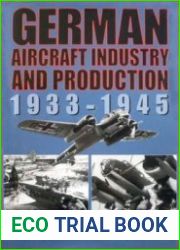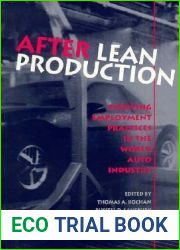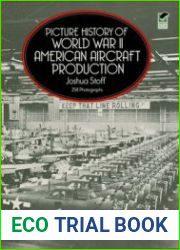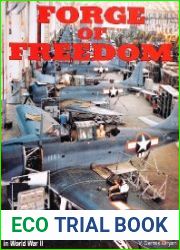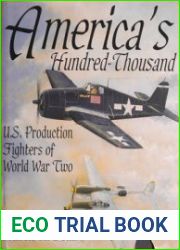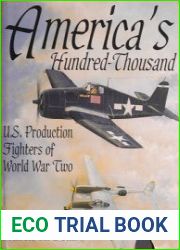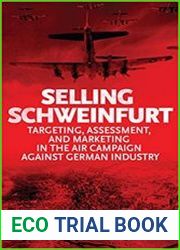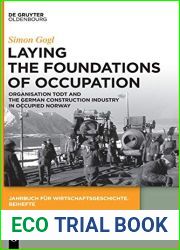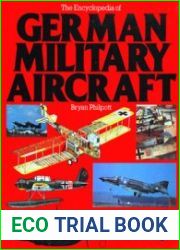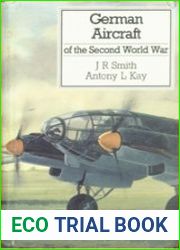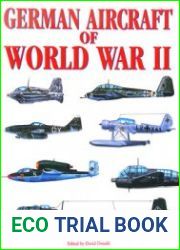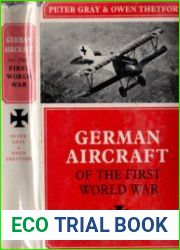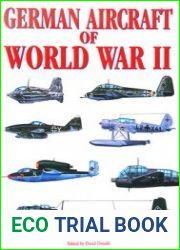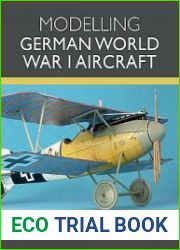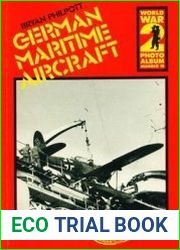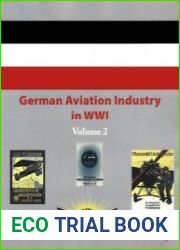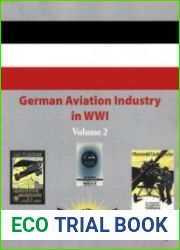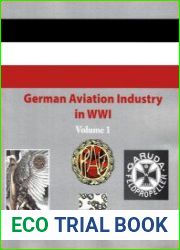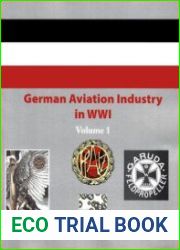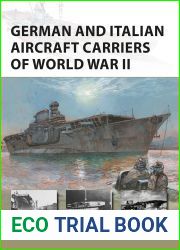
BOOKS - MILITARY HISTORY - German Aircraft Industry and Production 1933-1945

German Aircraft Industry and Production 1933-1945
Year: 1998
Pages: 330
Format: PDF
File size: 159 MB
Language: ENG

Pages: 330
Format: PDF
File size: 159 MB
Language: ENG

The book "German Aircraft Industry and Production 1933-1945" provides a comprehensive overview of the development and production of aircraft during World War II, focusing on the technological advancements made by the German aviation industry during this period. The book explores how the Nazi regime's obsession with speed and power led to the creation of advanced aircraft designs that were both impressive and deadly. From the early days of the Third Reich to the final months of the war, this book delves into the history of German aviation and its impact on the outcome of the conflict. The book begins with an introduction to the pre-war years, highlighting the significance of the Treaty of Versailles and its restrictions on Germany's military capabilities. It then delves into the development of the Luftwaffe, the German air force, and its rapid expansion during the 1930s. The author examines the role of key figures such as Hermann Göring, the commander-in-chief of the Luftwaffe, and the influence of the Nazi party on the direction of the aviation industry. The book then focuses on the technological advancements made during the war, including the development of jet engines, guided missiles, and high-altitude research. It also discusses the challenges faced by the industry, such as material shortages and the need for slave labor from concentration camps.
В книге «German Aircraft Industry and Production 1933-1945» представлен всесторонний обзор разработки и производства самолетов во время Второй мировой войны с акцентом на технологические достижения, достигнутые немецкой авиационной промышленностью в этот период. Книга исследует, как одержимость нацистского режима скоростью и мощью привела к созданию передовых конструкций самолетов, которые были впечатляющими и смертоносными. С первых дней Третьего рейха до последних месяцев войны эта книга углубляется в историю немецкой авиации и ее влияние на исход конфликта. Книга начинается с введения в предвоенные годы, подчёркивающего значение Версальского договора и его ограничений на военные возможности Германии. Затем он углубляется в развитие Люфтваффе, военно-воздушных сил Германии и его быстрое расширение в течение 1930-х годов. Автор рассматривает роль ключевых фигур, таких как Герман Геринг, главнокомандующий люфтваффе, и влияние нацистской партии на направление авиационной промышленности. Затем книга посвящена технологическим достижениям, достигнутым во время войны, включая разработку реактивных двигателей, управляемых ракет и высотные исследования. В нем также обсуждаются проблемы, с которыми сталкивается промышленность, такие как нехватка материалов и необходимость рабского труда из концентрационных лагерей.
livre « German Aircraft Industry and Production 1933-1945 » présente un aperçu complet du développement et de la production des avions pendant la Seconde Guerre mondiale, en mettant l'accent sur les progrès technologiques réalisés par l'industrie aéronautique allemande pendant cette période. livre explore comment l'obsession du régime nazi pour la vitesse et la puissance a conduit à la création d'avions de conception avancée qui ont été impressionnants et mortels. Depuis les premiers jours du Troisième Reich jusqu'aux derniers mois de la guerre, ce livre est en train d'approfondir l'histoire de l'aviation allemande et son impact sur l'issue du conflit. livre commence par l'introduction dans les années d'avant-guerre, soulignant l'importance du Traité de Versailles et ses restrictions sur les capacités militaires de l'Allemagne. Il s'oriente ensuite vers le développement de la Luftwaffe, l'armée de l'air allemande et son expansion rapide au cours des années 1930. L'auteur examine le rôle de personnalités clés telles que Herman Goering, commandant en chef de la Luftwaffe, et l'influence du parti nazi sur la direction de l'industrie aéronautique. livre traite ensuite des progrès technologiques réalisés pendant la guerre, y compris le développement des moteurs à réaction, des missiles guidés et des études d'altitude. Il traite également des problèmes auxquels l'industrie est confrontée, tels que le manque de matériaux et la nécessité de travailler comme esclaves dans les camps de concentration.
libro «German Aircraft Industry and Production 1933-1945» presenta un panorama completo del desarrollo y la producción de aviones durante la Segunda Guerra Mundial, con énfasis en los avances tecnológicos logrados por la industria aeronáutica alemana durante este período. libro explora cómo la obsesión del régimen nazi por la velocidad y el poder llevó a la creación de diseños de aviones avanzados que fueron impresionantes y letales. Desde los primeros días del Tercer Reich hasta los últimos meses de la guerra, este libro profundiza en la historia de la aviación alemana y su influencia en el resultado del conflicto. libro comienza con una introducción en los previos a la guerra, destacando la importancia del Tratado de Versalles y sus limitaciones a la capacidad militar de Alemania. Luego profundiza en el desarrollo de la Luftwaffe, la fuerza aérea alemana y su rápida expansión durante la década de 1930. autor repasa el papel de figuras clave como Hermann Goering, comandante en jefe de la Luftwaffe, y la influencia del partido nazi en la dirección de la industria aeronáutica. libro se centra luego en los avances tecnológicos logrados durante la guerra, incluyendo el desarrollo de motores a reacción, misiles guiados y estudios de altura. También analiza los problemas que enfrenta la industria, como la escasez de materiales y la necesidad de mano de obra esclava de los campos de concentración.
O livro «German Aircraft Indústria e Produção 1933-1945» apresenta uma revisão completa do desenvolvimento e produção de aviões durante a Segunda Guerra Mundial, com ênfase nos avanços tecnológicos alcançados pela indústria aérea alemã neste período. O livro está a investigar como a obsessão do regime nazi pela velocidade e potência levou à construção de construções avançadas de aviões que eram impressionantes e letais. Desde os primeiros dias do Terceiro Reich até os últimos meses da guerra, este livro se aprofundou na história da aviação alemã e sua influência no resultado do conflito. O livro começa com a introdução nos anos anteriores à guerra, ressaltando o significado do Tratado de Versalhes e suas limitações à capacidade militar alemã. Depois, aprofundou-se no desenvolvimento da Luftwaffe, a força aérea alemã e sua rápida expansão durante a década de 1930. O autor aborda o papel de figuras-chave, como Herman Göring, comandante-em-chefe da Luftwaffe, e a influência do partido nazista na direção da indústria aérea. Em seguida, o livro trata dos avanços tecnológicos alcançados durante a guerra, incluindo o desenvolvimento de motores a jato, mísseis controlados e pesquisas de altitude. Também discute os problemas que a indústria enfrenta, como a escassez de materiais e a necessidade de trabalho escravo dos campos de concentração.
Il libro «German Aircraft Industry and Production 1933-1945» fornisce una panoramica completa dello sviluppo e della produzione degli aerei durante la seconda guerra mondiale, con un focus sui progressi tecnologici raggiunti dall'industria aerea tedesca in questo periodo. Il libro sta esplorando come l'ossessione del regime nazista per la velocità e la potenza abbia portato alla creazione di progetti aerei all'avanguardia che sono stati impressionanti e letali. Dai primi giorni del Terzo Reich agli ultimi mesi di guerra, questo libro sta approfondendo la storia dell'aviazione tedesca e la sua influenza sull'esito del conflitto. Il libro inizia con l'introduzione negli anni precedenti, che sottolinea il significato del Trattato di Versailles e le sue restrizioni alle capacità militari tedesche. Poi si approfondisce nello sviluppo della Luftwaffe, l'aeronautica militare tedesca e la sua rapida espansione nel corso degli annì 30. L'autore considera il ruolo di figure chiave come Hermann Goering, comandante in capo della Luftwaffe, e l'influenza del partito nazista sulla direzione dell'industria aerea. Il libro parla poi dei progressi tecnologici raggiunti durante la guerra, tra cui lo sviluppo di motori a jet, missili guidati e ricerche in alta quota. discute anche dei problemi che l'industria deve affrontare, come la carenza di materiali e la necessità di lavorare come schiavi nei campi di concentramento.
Das Buch „Deutsche Flugzeugindustrie und -produktion 1933-1945“ gibt einen umfassenden Überblick über die Entwicklung und Produktion von Flugzeugen während des Zweiten Weltkriegs mit Schwerpunkt auf den technologischen Fortschritten der deutschen Luftfahrtindustrie in dieser Zeit. Das Buch untersucht, wie die Obsession des NS-Regimes mit Geschwindigkeit und Macht zu fortschrittlichen Flugzeugdesigns führte, die beeindruckend und tödlich waren. Von den ersten Tagen des Dritten Reiches bis zu den letzten Kriegsmonaten taucht dieses Buch tief in die Geschichte der deutschen Luftfahrt und ihren Einfluss auf den Ausgang des Konflikts ein. Das Buch beginnt mit einer Einführung in die Vorkriegsjahre, die die Bedeutung des Versailler Vertrags und seiner Beschränkungen für die militärischen Fähigkeiten Deutschlands hervorhebt. Dann vertieft er sich in die Entwicklung der Luftwaffe, der deutschen Luftwaffe und deren rasante Expansion in den 1930er Jahren. Der Autor untersucht die Rolle von Schlüsselfiguren wie Hermann Göring, Oberbefehlshaber der Luftwaffe, und den Einfluss der NSDAP auf die Richtung der Luftfahrtindustrie. Das Buch konzentriert sich dann auf technologische Fortschritte, die während des Krieges erzielt wurden, einschließlich der Entwicklung von Düsentriebwerken, nkflugkörpern und Höhenforschung. Es diskutiert auch die Herausforderungen, denen sich die Industrie gegenübersieht, wie Materialknappheit und die Notwendigkeit von Sklavenarbeit aus Konzentrationslagern.
הספר German Aircraft Industry and Production 1933-1945 מספק סקירה מקיפה של פיתוח וייצור המטוסים במהלך מלחמת העולם השנייה, עם דגש על ההישגים הטכנולוגיים שהשיגה תעשיית התעופה הגרמנית בתקופה זו. הספר בוחן כיצד האובססיה של המשטר הנאצי למהירות ולכוח הובילה לעיצובי מטוסים מתקדמים שהיו מרשימים וקטלניים. מימיו הראשונים של הרייך השלישי ועד לחודשי המלחמה האחרונים, הספר מתעמק בהיסטוריה של התעופה הגרמנית ובהשפעתה על תוצאות הסכסוך. הספר מתחיל עם הקדמה בשנים שלפני המלחמה, תוך הדגשת חשיבותו של הסכם ורסאי והגבלותיו על היכולות הצבאיות הגרמניות. לאחר מכן הוא מתעמק בפיתוח הלופטוואפה, חיל האוויר הגרמני והתפשטותו המהירה במהלך שנות ה-30 של המאה ה-20. המחבר בוחן את תפקידן של דמויות מפתח כמו הרמן גרינג, המפקד העליון של הלופטוואפה, ואת השפעתה של המפלגה הנאצית על כיוון תעשיית התעופה. הספר מתמקד בהתקדמות טכנולוגית שנעשתה במהלך המלחמה, כולל פיתוח מנועי סילון, טילים מונחים ומחקר בגובה רב. הוא דן גם בסוגיות העומדות בפני התעשייה, כגון מחסור חומרי והצורך בעבדות ממחנות ריכוז.''
"Alman Uçak Endüstrisi ve Üretimi" kitabı 1933-1945 Alman havacılık endüstrisinin bu dönemde elde ettiği teknolojik başarılara vurgu yaparak, II. Dünya Savaşı sırasında uçakların gelişimi ve üretimi hakkında kapsamlı bir genel bakış sunmaktadır. Kitap, Nazi rejiminin hız ve güç takıntısının etkileyici ve ölümcül olan gelişmiş uçak tasarımlarına nasıl yol açtığını araştırıyor. Üçüncü Reich'ın ilk günlerinden savaşın son aylarına kadar, bu kitap Alman havacılık tarihine ve çatışmanın sonucu üzerindeki etkisine değiniyor. Kitap, savaş öncesi yıllarda, Versay Antlaşması'nın önemini ve Alman askeri yetenekleri üzerindeki kısıtlamalarını vurgulayan bir giriş ile başlıyor. Daha sonra Luftwaffe'nin, Alman Hava Kuvvetleri'nin ve 1930'lardaki hızlı genişlemesinin gelişimini araştırıyor. Yazar, Luftwaffe'nin başkomutanı Hermann Göring gibi önemli figürlerin rolünü ve Nazi partisinin havacılık endüstrisinin yönü üzerindeki etkisini inceliyor. Kitap daha sonra savaş sırasında jet motorlarının, güdümlü füzelerin ve yüksek irtifa araştırmalarının geliştirilmesi de dahil olmak üzere teknolojik gelişmelere odaklanıyor. Ayrıca, malzeme kıtlığı ve toplama kamplarından köle emeğine duyulan ihtiyaç gibi endüstrinin karşılaştığı sorunları da tartışıyor.
يقدم كتاب «صناعة الطائرات الألمانية وإنتاجها 1933-1945» لمحة عامة شاملة عن تطوير وإنتاج الطائرات خلال الحرب العالمية الثانية، مع التركيز على الإنجازات التكنولوجية التي حققتها صناعة الطيران الألمانية خلال هذه الفترة. يستكشف الكتاب كيف أدى هوس النظام النازي بالسرعة والقوة إلى تصميمات طائرات متقدمة كانت مثيرة للإعجاب ومميتة. من الأيام الأولى للرايخ الثالث إلى الأشهر الأخيرة من الحرب، يتعمق هذا الكتاب في تاريخ الطيران الألماني وتأثيره على نتيجة الصراع. يبدأ الكتاب بمقدمة في سنوات ما قبل الحرب، تؤكد على أهمية معاهدة فرساي وقيودها على القدرات العسكرية الألمانية. ثم يتعمق في تطوير Luftwaffe والقوات الجوية الألمانية وتوسعها السريع خلال الثلاثينيات. يبحث المؤلف في دور الشخصيات الرئيسية مثل هيرمان غورينغ، القائد العام للقوات المسلحة، وتأثير الحزب النازي على اتجاه صناعة الطيران. ثم يركز الكتاب على التقدم التكنولوجي الذي تم إحرازه خلال الحرب، بما في ذلك تطوير المحركات النفاثة والصواريخ الموجهة والأبحاث على ارتفاعات عالية. كما يناقش القضايا التي تواجه الصناعة، مثل النقص المادي والحاجة إلى السخرة من معسكرات الاعتقال.
"독일 항공 산업 및 생산 1933-1945" 책은 제 2 차 세계 대전 동안 항공기의 개발 및 생산에 대한 포괄적 인 개요를 제공하며이 기간 동안 독일 항공 산업이 달성 한 기술 성과에 중점을 둡니다. 이 책은 나치 정권의 속도와 힘에 대한 집착이 어떻게 인상적이고 치명적인 고급 항공기 설계로 이어 졌는지 탐구합니다. 제 3 제국의 첫날부터 전쟁의 마지막 달까지이 책은 독일 항공의 역사와 분쟁의 결과에 미치는 영향을 탐구합니다. 이 책은 베르사유 조약의 중요성과 독일의 군사 능력에 대한 제한을 강조하면서 전쟁 전 소개로 시작됩니다. 그런 다음 루프트 바페, 독일 공군 및 1930 년대의 급속한 확장을 탐구합니다. 저자는 루프트 바페의 사령관 인 헤르만 괴링 (Hermann Göring) 과 같은 주요 인물의 역할과 항공 산업의 방향에 대한 나치당의 영향을 조사합니다. 그런 다음이 책은 제트 엔진, 유도 미사일 및 고고도 연구의 개발을 포함하여 전쟁 중에 이루어진 기술 발전에 중점을 둡니다. 또한 물질 부족 및 강제 수용소의 노예 노동 필요성과 같은 산업이 직면 한 문제에 대해서도 논의합니다.
「1933-1945德國飛機工業和生產」一書全面概述了第二次世界大戰期間飛機的發展和生產,重點是德國航空業在此期間取得的技術進步。該書探討了納粹政權對速度和威力的癡迷如何導致制造出令人印象深刻和致命的先進飛機設計。從第三帝國的早期到戰爭的最後幾個月,這本書深入探討了德國航空的歷史及其對沖突結果的影響。這本書從戰前時期的介紹開始,強調了《凡爾賽條約》的重要性及其對德國軍事能力的限制。然後,他深入研究了德國空軍,德國空軍的發展及其在1930代的迅速發展。作者回顧了德國空軍總司令赫爾曼·戈林(HermannGöring)等關鍵人物的作用,以及納粹黨對航空業方向的影響。然後,該書重點介紹了戰爭期間取得的技術進步,包括噴氣發動機,制導導彈的發展和高空研究。它還討論了工業面臨的挑戰,例如缺乏材料和需要集中營的奴隸勞動。







